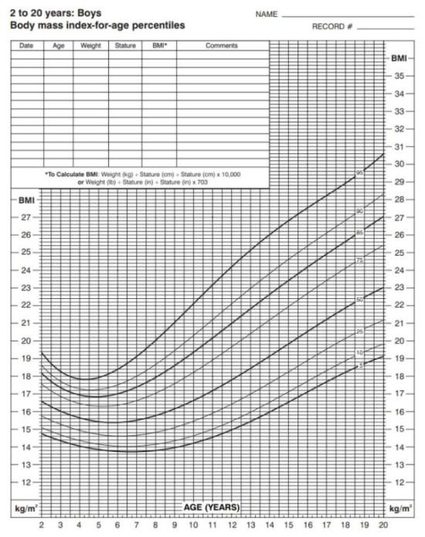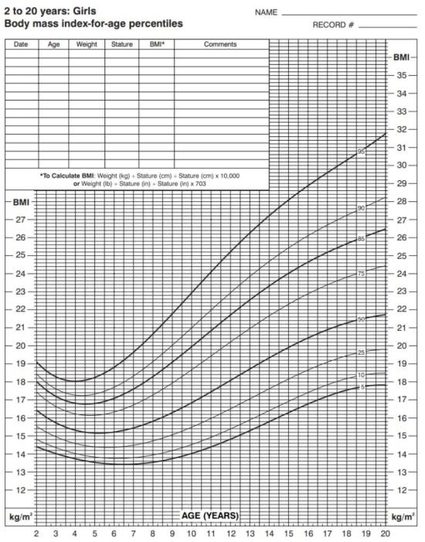BMI Calculator for Teens
Welcome to the BMI calculator for teens, a simple tool that allows you to calculate your teenage BMI, check if you are in the range of a healthy BMI for teens, and compare your results with other teenagers. We will not only help you to calculate your BMI for teens quickly and painlessly, but we will also teach you how to read the BMI charts for teens and what you can do to achieve your ideal BMI.
We try our best to make our Omni Calculators as precise and reliable as possible. However, this tool can never replace a professional doctor's assessment. If any health condition bothers you, consult a physician.
What is BMI and does it matter for teens?
Many of you probably already know what BMI is, but for those who don't, to have a complete picture, let's talk briefly about its definition. BMI stands for Body Mass Index and it is a measurement of a person's weight in relation to their height. The most widely used units are metric (that is, meters for length/height and kilograms for weight). This is true even in imperial countries like the USA.
Obtaining your BMI is very simple and can be done by simply diving your weight by your height squared, as shown in the BMI formula:
As you can see, it is not rocket science to calculate your BMI, but for those lazy amongst us (trust us, you're not alone) we have made this task even simpler with the BMI calculator for teens. The calculator is designed specifically for the BMI of teenagers, as it will give you extra information about how your BMI relates to this population group. If you desire to calculate the BMI of a person who is not a teenager, we have designed different BMI calculators for all population groups.
Why a BMI calculator for teens
In fact, we at Omni have created a total of 5 BMI calculators that include a general BMI calculator (jack of all trades, master of none) as well as specific BMI calculators for men, women, kids, and teens. Feel free to use the one that best suits your needs by following the links below:
- General BMI calculator;
- BMI calculator for men;
- BMI calculator for women; and
- BMI calculator for kids (boys and girls up to 10 years old).
If you are feeling curious, we encourage you to check out all of the calculators, since there is interesting information not only about BMI but about its relation to health and how to properly use this value to your advantage.
Some of you might be wondering why we made so many calculators if the BMI formula is the same regardless of the person. The answer is very simple: statistics and percentiles. We will get into more detail about these topics in a later section, but for now, we can say that different populations have different acceptable values for BMI; for example, the value for a healthy BMI for teens is not the same as that for a 2-year-old child. Having multiple calculators allows you to get more precise information regarding the population group, presented in an orderly manner.
BMI, statistics and percentiles
It is useless to talk about BMI without a point of reference or comparison. In fact, BMI was always designed to be a statistical comparison tool to assess the state of a person's body. We have talked in great detail about the flaws of a statistical tool for assessing the health of one individual in the general BMI calculator, but as long as we set some constraints, BMI can still be useful.
The first thing to know is that BMI is meant as a measurement for sedentary people. This means that athletes and very active people might have "unhealthy" BMI values despite being totally healthy. The second thing to note is that BMI doesn't consider body types and body shapes, so if you have an uncommon or extreme body type, your BMI might not be a good indicator of your health.
These shortcomings of BMI are due to its statistical nature. BMI ranges, and BMI charts are constructed using data from people's actual body mass indexes, so this can skew the results. This is not to say that BMI is useless since most of the population is 'averagely healthy', but just that it needs to be taken with a pinch of salt. For easy comparison, BMI is typically divided into percentiles or percentile groups.
The percentile is the position you occupy in the BMI range in comparison with the rest of your population. So if your BMI is in the 30th percentile, that means that your BMI is higher than 30% of the population. Since making a distinction between the 72nd and the 73rd percentile is effectively irrelevant, percentiles are typically grouped according to the BMI categories they represent.
For example, in this calculator, we follow the WHO (World Health Organization) ruling and group the percentiles of BMI for teens in 10 groups: lower than 5th, 5th-10th, 10th-25th, 25th-50th, 50th-75th, 75th-85th, 85th-90th, 90-95th, higher than 95th. For the adult population, each of these groups represents a different BMI category. However, for teens and kids that are still developing, there are only 4 categories recognized by WHO: Underweight (lower than 5th), Normal/Healthy (5th-85th), Overweight (85th-95th), and Obese (higher than 95th).
BMI prime and healthy BMI for teens
There is one more item in the BMI calculator for teens that we haven't mentioned yet, BMI prime. This quantity, derived from BMI, measures how close your BMI is to the "healthy BMI for adults". The standard value for a healthy BMI in adults is 25kg/m². Although this is very useful for men and women, its validity is questionable at best for teens and kids. Still, we have decided to keep it here for a comparison between calculators and also for consistency.
To obtain your BMI prime, all you need to do is to divide your actual BMI by 25, and you will hopefully obtain a number close to 1. The closer you get to 1, the healthier your BMI is said to be. It is important, however, to remember that since we're dealing with smaller numbers, the difference between worryingly unhealthy and 'perfect' is much smaller than with regular BMI calculations.
We have mentioned that the BMI prime is pretty much irrelevant for most teenagers. This is because there is a great variation between different ages in terms of what is a healthy BMI. A healthy BMI for teens varies between 14 and about 25, depending on age and sex. In the next section, we will see why this happens.
BMI chart for teens and its relevance
When it comes to determining what a healthy BMI for teens is, BMI charts rule, quite literally. What we mean by that is that BMI charts for teens are actually the medical way to determine whether a teenager has a healthy body mass index or if they are at risk. These charts (shown below) are different for boys and girls and present a visualization of the percentiles we mentioned in the previous section.

When looking at the charts, you can quickly find what percentile you belong to and, from that, how (un)healthy your BMI is. At this early stage of body development, many factors influence the body's composition and proportions, both of which affect the BMI value.
If there are many variables that are ignored in an adult's BMI, it's even worse for teens and kids. One way to deal with this is to separate the acceptable BMI values by age and gender and just compare a given teenager with the rest of the teenagers in his or her age group. This is by no means perfect, but together with the broad margins for healthy BMI for teens established by WHO, this makes it a fairly robust diagnostic system.

As always, we need to keep our eyes on the bigger picture, and we have dedicated an entire section of our time toward that aim. For now, let's just take a look at the BMI charts for teens and, after that, learn how to use this BMI calculator for teens and what to do with its results; after all, that's what you came here for, isn't it?
How to use the BMI calculator for teens
Using our BMI calculator for teens is very simple. All you need to do is input your height and weight to get your BMI and BMI prime values. However, if you also input your age and sex, you will get much more information. More specifically, the calculator will automatically tell you all this information:
- Your BMI;
- Your BMI prime;
- Your percentile according to your age and sex; and
- Your BMI category according to WHO.
Now, you have all the data you possibly want, but numbers are numbers, and they are meaningless unless you know how to interpret them. While we have done our best to explain some of the terms and values we provide in our calculator, we haven't really gone into a huge amount of depth about the connection between BMI and health. So, let's do it in the next section.
A word of caution regarding BMI for teens and health
After talking about BMI and its ideal values, as well as categories, we need to take a step back and talk about why we use BMI in the first place. In a world where we have places suffering from an obesity epidemic while at the same time millions of people die of malnutrition, assessing our body's state of health is very important. Ideally, you should go to your doctor periodically and get a full body exam, including blood tests and body composition tests.
However, that is impractical and even impossible for some people, so WHO decided to create a simple tool that would serve as a quick and easy indicator of your body's state, at least regarding nutrition. There are so many factors that influence the health of the human body that it would be too complicated to include them all.
Even if WHO decided to use an Omni calculator to estimate your ideal body weight, the amount of body fat, lean body mass, or body water content, it would still be a very time-consuming process. It would require access to the Internet, which cannot be taken for granted. So, instead, the WHO decided to settle for a quantity that could be calculated from two easy-to-measure parameters: height and weight.
Using these two simple values (which pretty much everyone knows roughly), we can get a decent estimation of your body's health and whether you should take action to improve it or not. The best way to think about BMI is as a "pre-doctor" test that you can do at any time. If you find yourself in the risk categories (underweight, obese, etc.), you should consult with an expert to get a more thorough check on your health.
Just remember that everything you read on the Internet should be taken with a grain of salt. The best medical advice and diagnosis come from doctors who have undergone the proper training and studies. If you want an expert opinion on a topic, consult an expert.